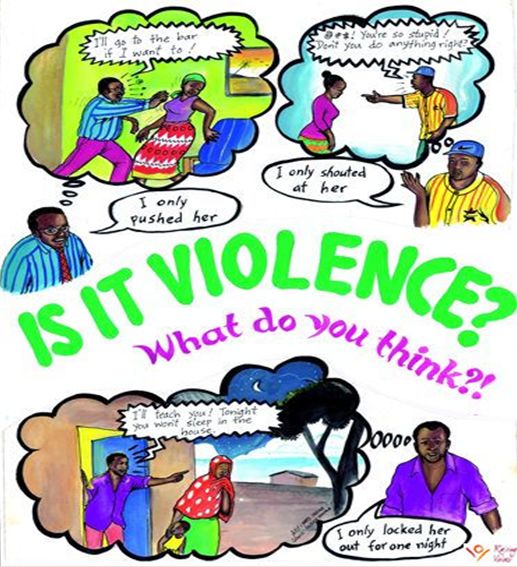Comic books help convey the campaign message to people who cannot or do not want to read longer text, and are likely to especially appeal to a younger audience. Since they are quite a specialized product that requires skill to develop, it is important seek help or advice from people who have experience in designing them.
Comic books need to be designed and pre-tested carefully so that the target audience can identify with or be moved by the story presented. For example, stories set in an urban context may be of little interest to villagers, and vice-versa. When trying to reach a wide audience, one must take into account the different dress, mannerisms and ways of living of different communities. One can either try to find a common denominator, or design a whole set of different materials tailored to each different community.
Examples:
- The comic book “Has it Happened to You?” by Raising Voices talks about violence against children. It shows common forms of violence that can take place and actions children affected by violence can take.
- The comic booklet “Breaking Barriers: Safe Schools: Every Girl’s Right” by Amnesty International relates the story of a school girl who successfully rallied fellow students’ support to end violence against girls in their school. It can be downloaded in English, French, Spanish and Arabic versions.
- The comic book Assegura’t! Còmic de Prevenció de les Violènces Masclistes and Facilitator’s Guide by Department of Home Affairs, Institutional Relations and Participation - Government of Catalonia, is aimed at young people to prevent gender-based violence.
- The comic book Ntombi’s Song – I Can Ask for Help! in English and Zulu by the Children in Distress Network takes children through the process of disclosing, getting help and healing from experiences of sexual abuse.
- The Border Comic Series produced for Kenya and Uganda by two PATH projects, Scouting for Solutions and APHIA II Western is designed to foster positive attitudes and perspectives for health youth relationships, covering topics such as gender violence, sex and HIV. Download volumes one, two and three in English.
- Some campaigns also use elements of comic art for their websites or posters. See for example the “Is it violence? What do you think?” poster by Raising Voices, Uganda.
